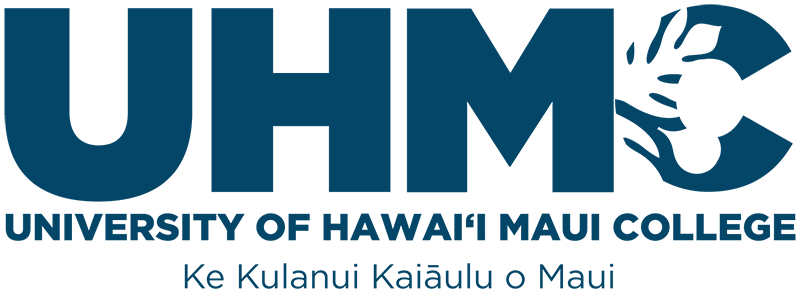UHMC Executive Summary 2012-13
Instruction
For academic year 2012-13, the Career and Technical Education (CTE) and the Liberal Arts programs submitted a total of 24 instructional and 3 developmental program reviews. Each CTE review included a special emphasis on an overall assessment of their outcomes at both the course and program levels. Program Reviews are reviewed by the assessment coordinator, a peer faculty or staff, and the Vice Chancellor of Academic Affairs, who provided constructive feedback to program coordinators. As a result of this program review process, during the 2012-13 academic year, programs continue to make progress mapping their courses to the Program Learning Outcomes (PLOs) of their program, and each program continues to seek validation and support of their PLOs from their respective advisory committees. Additionally, programs have begun mapping college-wide student learning outcomes (CASLOs) into their course and program analysis, and will continue to align each to Institutional Learning Outcomes that are being developed through a campus-wide process led by a Strategic Planning Committee. During the year, UH Maui College experienced changes in their program health call indicators. Eight programs were classed as healthy (four more than last year), 13 were ranked as cautionary (one less than last year), and only three programs scored an unhealthy call (up two from the previous year). The increase in unhealthy calls for is attributed to an unexpected decrease in job opportunities due to the economic downturn, and the inclusion in two new programs in Natural Science and Hawaiian Studies, both of which are getting established. The college met all 2011-12 Perkins Core indicator goals except for 2P1 (Credential, Certificate, or Degree). This measure continues to be a challenge. Department Chairs and Program Coordinators have been made aware of these deficiencies and have been challenged to improve these during the 2013-2014 academic year, and to address them in their next program reviews.
Support Programs
UH Maui College Academic Support programs including the four outreach centers at Hana, Lahaina, Lanai, and Molokai, the University Center, Learning Center (TLC), and Continuing Education (OCET) also submitted annual program reviews for academic year 2012-13. These annual program reviews are also reviewed by the Vice Chancellor of Academic Affairs, who provides constructive feedback to the center coordinators. Program review documents confirm the essential role of Academic Support Programs providing access and support for students throughout the college. The first Information Technology program review was submitted. The reorganization of the UH Maui College Academic Support Program into separating the responsibility for “information technology and services” under a new program overseen by a newly created Vice Chancellor for Information Technology during academic year 2012 produced an overview of various activities conducted by this reorganized program. Upon the departure of the IT Vice Chancellor for another mainland position, an interim Vice Chancellor for IT followed through with a review and assessment of media, IT, and library services
Vision and Plans
UH Maui College will continue to refine its assessment process that was establish by a collaborative effort of campus members with special emphasis on methods to increase student learning and adding value to the student experience so students are well prepared to enter the workforce and become productive citizens of the community. The College will continue to follow up with program coordinators to link resource requirements to evidence of student learning outcome achievement. Moreover, the College will identify policy, planning and budget considerations, as well as best practices, emerging from the program review process.
The UH Maui College strategic planning and assessment process is guided by a Vision, Mission, Core Values and Institutional Learning Outcomes that are grounded in how UH Maui College “Inspires Learning” among our students, within our community and among colleagues. This rubric driven process is being led by faculty and staff members with strong support from administration. Each year UH Maui College degree programs collect and review evidence of a program level student learning outcome at an exit level course appropriate for each program. Parallel to this review, an assessment team reviews one general education learning outcome, also at an exit level course at the level appropriate for each program. For example, this past year the English faculty led the assessment of written communication across the curricula. The outcome of this process is a list of recommendations that are emerging into planning priorities for the next year. In some cases these recommendations involve requests for funding, however, most recommendations relate to pedagogical improvements. This process is repeated annually, moving on to the review of the next program and general education outcome. Over time, each program and general education outcome is reviewed and then the process begins again in earnest. This dynamic assessment and planning model is being scaled to include student services, instructional services, administrative services and information technology. We are also in the process of developing rubrics to be used for both vetting and assessing entrepreneurial ventures. The campus community has embraced this participatory approach to shared governance. Furthermore, this high level of participation improves campus communication and the quality of decision making around the strategic direction of the college. This planning and assessment process creates a form of shared governance that establishes integrity as we advocate for our students, engage all constituents, and to sustain our position as the leading institution of higher education in Maui County. Moreover, this shared governance insures that we speak with a common language as we continually improve while addressing community needs and opportunities. Many of the goals that have emerged through this process require resources beyond institutional capacity. Alternative methods of funding have been required to address these opportunities
